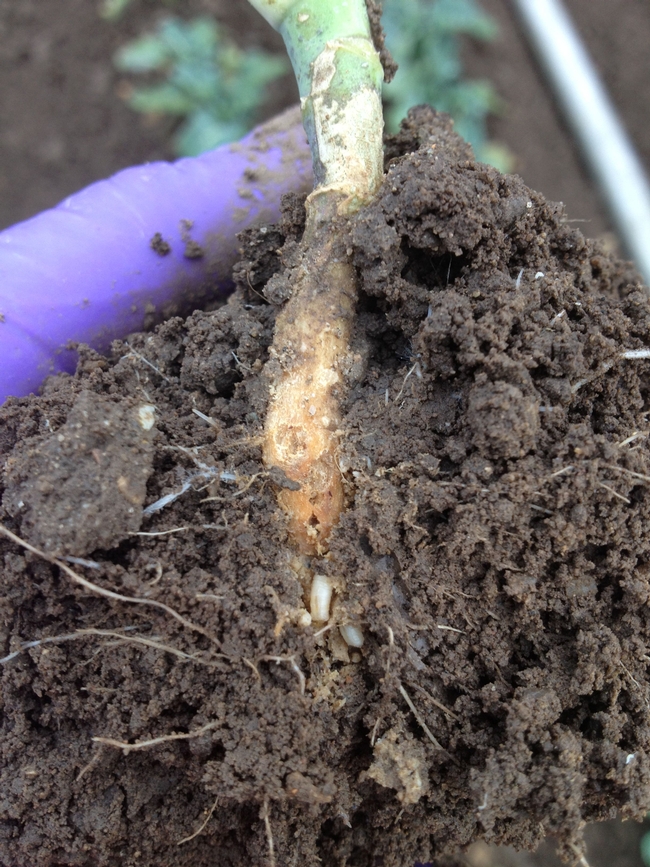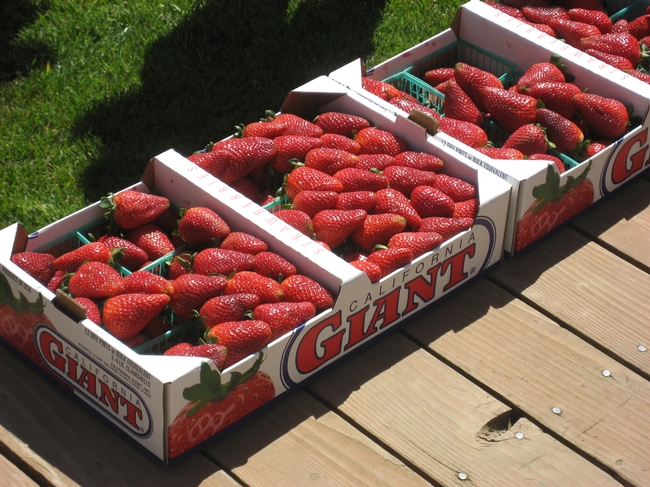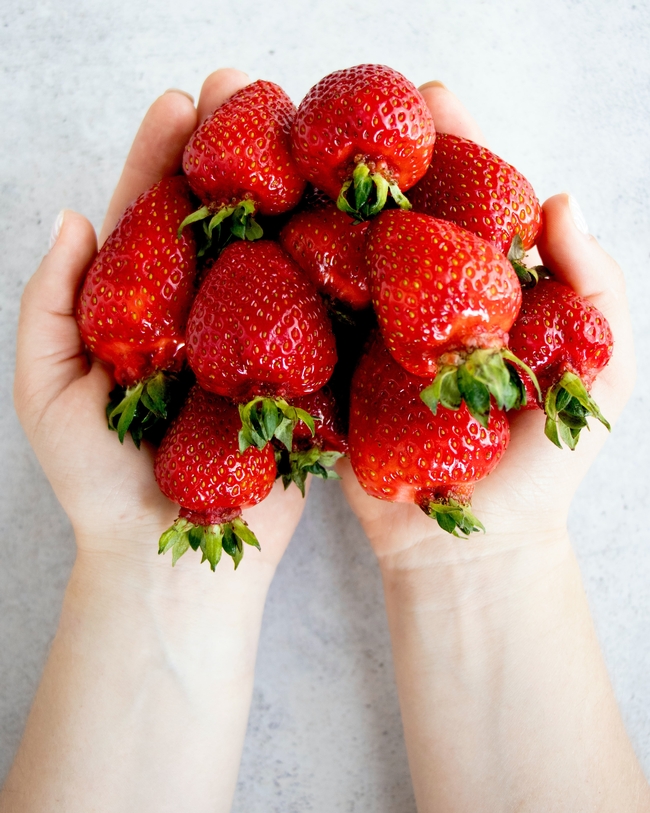Posts Tagged: strawberry
UC Davis awarded grant to advance strawberry breeding, genetic tools
The $6.2 million grant centers on protecting crops in the future
The federal government is awarding $6.2 million to University of California, Davis, to study how to use breeding and genetic information to protect strawberry crops from future diseases and pests.
The four-year grant from the National Institute of Food and Agriculture (NIFA) centers on addressing expanding and emerging threats to strawberries, a popular fruit packed with Vitamin C and key to the diets of many Americans.
Enhanced plant breeding, gene editing and other technologies will be key to ensuring strawberry crops are sustainable in the face of climate change and possible restrictions on chemical use, said Steve Knapp, director of the Strawberry Breeding Center and a distinguished professor in the Department of Plant Sciences.
“We need to have the technology so that we can deal with the challenges strawberries face around the world,” Knapp said. “Can we use genetic knowledge to change the DNA in a specific way to get the resistance we need?”
USDA funding
The grant award was one of 25 announced Oct. 5 by NIFA – an agency of the U.S. Department of Agriculture – as part of the Specialty Crop Research Initiative program, which addresses “key challenges of national, regional and multistate importance in sustaining all components of food and agriculture…,” the agency said.
The strawberry industry has lagged behind crops like tomato and wheat when it comes to genetic and technical innovation, Knapp said, and the grant signifies that “now they want the foot on the accelerator.”
A key priority is identifying whether changing DNA molecules can improve disease resistance and what technologies would be needed. Ensuring some genes are expressed while others are suppressed would be part of the analysis.
“We're trying to build in natural resistance to pathogens through the genes that already exist but could be modified with this knowledge,” Knapp said. “If we were able to edit a gene that improves disease resistance, people would want us to use that in breeding.”
The intent is to produce disease-resistant cultivars and identify better ways to diagnose, prevent and manage disease. The research project will also include an economic forecast evaluating the consequences of production changes and communicating with farmers about the laboratory advances, according to the grant proposal.
Gitta Coaker from plant pathology and Mitchell Feldmann, Marta Bjornson and Juan Debernardi from plant sciences are participating in the research, as are scientists from California Polytechnic State University, UC Agriculture and Natural Resources, UC Berkeley, University of Florida and USDA's Agricultural Research Service.
UC ANR scientists get $450,000 to study pesticide alternatives
UC ANR scientists get $450,000 to study pesticide alternatives

The root maggot, a pest of cole crops, can wipe out an entire field of broccoli or cauliflower by tunneling through the plants’ roots. With a new $302,542 grant from the Department of Pesticide Regulation, Shimat Joseph, UC Cooperative Extension advisor in Monterey County, will study ways growers can protect their high-value crops from this persistent pest.
“In the Salinas Valley, cabbage maggot infestation in a field can exceed 90 percent,” said Joseph, who specializes in integrated pest management.

Joseph, who specializes in entomology, will evaluate the susceptibility of broccoli when it is planted next to other various crops such as turnip, lettuce, cauliflower or cabbage, to see if the neighboring crop influences the broccoli field’s attractiveness to cabbage maggots. He will also evaluate different broccoli and cauliflower varieties for their resistance or tolerance to the maggots and will look into the role planting date in determining a plant’s susceptibility to the pest.
Lynn Epstein, professor in the Department of Plant Pathology at UC Davis, received a $153,289 Department of Pesticide Regulation grant to study alternatives to methyl bromide for strawberry nursery fumigation.
California produces more than a billion strawberry runner plants every year, with a total annual value of approximately $60 million. For the past 50 years, fumigating the soil with methyl bromide before planting has been the most effective way to keep soil-borne pathogens, nematodes and weeds from overwhelming strawberry nursery plants. In recent years, though, methyl bromide has become increasingly restricted, with the intention of eventually phasing it out entirely.

Anaerobic soil disinfestation integrates heat from solarization and oxygen deprivation from flooding, according to Epstein.
“We’ll incorporate a relatively inexpensive carbon source into the topsoil, irrigate it to field capacity, and then cover the amended soil with a plastic tarp,” Epstein said. The anaerobic byproducts that build up are toxic to pathogens, but those byproducts will degrade rapidly after the tarp is removed.”
UC estimates costs for growing strawberries on coast

Each analysis is based upon hypothetical farm operations using practices common in the region. Input and reviews were provided by UC Cooperative Extension farm advisors, UC researchers, growers, farm accountants, pest control advisers, consultants and other agricultural associates.
The studies describe the assumptions used to identify current costs for the individual crops, material inputs, cash and non-cash overhead. A ranging analysis table shows profits over a range of prices and yields. Other tables show the monthly cash costs, the costs and returns per acre, hourly equipment costs, and the whole farm annual equipment, investment, and business overhead costs.
The new studies are as follows:
Sample Costs to Produce Strawberries, 2011, South Coast Region (Santa Maria Valley) by Surendra Dara, Karen M. Klonsky and Richard L. De Moura.
Sample Costs to Produce Strawberries, 2011, South Coast Region (Oxnard Plain) by Oleg Daugovish, Karen M. Klonsky and Richard L. De Moura.
Sample Costs to Produce Second Year Strawberries, 2011, Central Coast Region (Santa Cruz & Monterey Counties) by Mark P. Bolda, Laura Tourte, Karen M. Klonsky and Richard L. De Moura.
All cost of production studies are available for free download at http://coststudies.ucdavis.edu, at UC Cooperative Extension offices or by calling (530) 752-3589. For more information about the studies, contact Richard De Moura at rdemoura@ucdavis.edu in the Department of Agricultural and Resource Economics at UC Davis.
New film traps fumigants and increases strawberry yields

UC scientists now report that use of totally impermeable film in strawberry fields can improve the effectiveness of a widely-used MB alternative known as 1,3-D (1,3, dichloropropene). Use of the film reduces the amount of 1,3-D needed to maintain yields, while lowering field emissions overall.
The strawberry industry is highly dependent on soil fumigation to control pests and maintain high yields. The methyl bromide alternative, 1,3-D, can be used only in certain quantities, due to air quality concerns.
In a recent trial, totally impermeable film (TIF) was laid out over Salinas fields to prevent the fumigant from leaking. The new film was compared with the standard film used by growers. Fumigant concentrations under TIF were 46 percent to 54 percent higher than under standard film, and the higher concentrations were correlated with higher strawberry yields and better weed control. Scientists report these findings in detail in the October–December 2011 electronic edition of the University of California’s California Agriculture journal.
Impermeable films have three benefits, according to lead author Steven Fennimore, UC Cooperative Extension specialist and weed scientist in UC Davis Department of Plant Sciences. The films trap the fumigant in the soil for a longer time and thereby increase its effectiveness; they reduce fumigant emissions, which after reacting with nitrogen oxides, can convert to ground-level ozone; and they reduce the amount of fumigant needed for effective pest control.
Emissions are a chief concern. Methyl bromide, a widely used fumigant in combination with chloropicrin, has been phased out since 2005 because it is an ozone-depleting substance targeted by the Montreal Protocol (a global treaty to control ozone depletion) and the U.S. Clean Air Act. However, it is still being used in some California strawberry fields under a critical-use exemption. Restrictions on the use of 1,3-D to 90,250 pounds per 36-square-mile township (called the township cap) leave few other options for growers in key strawberry production areas near densely populated areas.
Comparing TIF with standard film, and methyl bromide plus chloropicrin with varying amounts of 1,3-D plus chloropicrin, the scientists rated the effectiveness of TIF. The results, writes Fennimore, suggest that to achieve fruit yield and weed control similar to methyl bromide and chloropicrin, 33 percent less 1,3-D plus chloropicrin is needed under TIF than standard films.
TIF may ease some of the burdens of fumigant regulations on end-users, as well as ease concerns of the general public about exposure to fumigants, he concludes.
The entire October–December 2011 issue, and the electronic edition, can be viewed and downloaded at http://californiaagriculture.ucanr.org.
California Agriculture is the University of California’s peer-reviewed journal of research in agricultural, human and natural resources. For a free subscription, visit http://californiaagriculture.ucanr.org, or write to calag@ucdavis.edu.
###
WRITERS/EDITORS: To request a hard copy of the journal, email crllopez@ucdavis.edu
